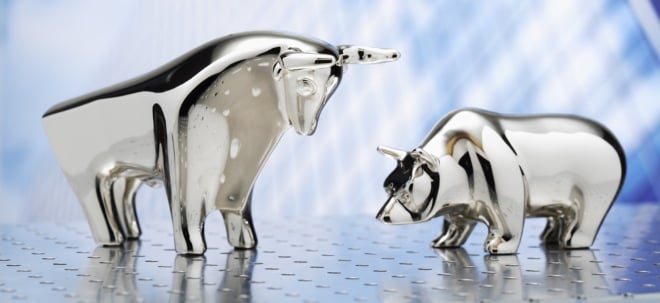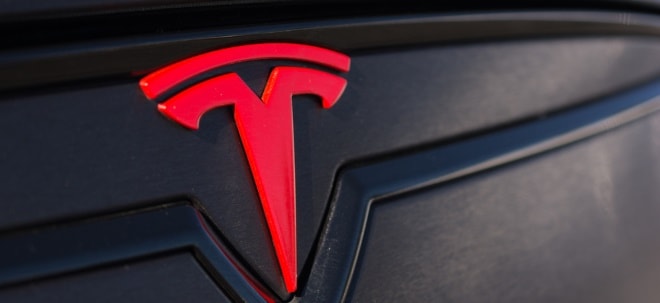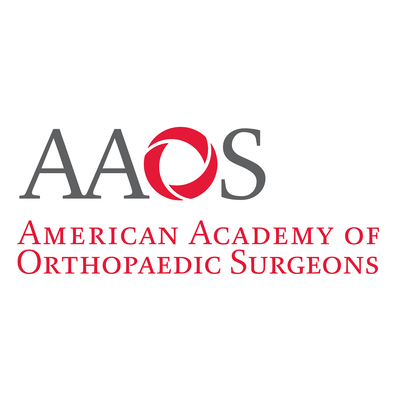OREF Clinical Research Award Presented to Brian J. Cole, MD, MBA, FAAOS, for 25 years of Basic Science, Clinical Research Leading to Optimized Patient Outcomes Following Osteochondral Allograft Tr...
ROSEMONT, Ill., Feb. 7, 2025 /PRNewswire/ -- The 2025 Orthopaedic Research and Education Foundation (OREF) Clinical Research Award was presented to Brian J. Cole, MD, MBA, FAAOS, for his collaborative effort over the past 25 years to advance osteochondral allograft (OCA) transplantation to treat cartilage and bone defects in the knee. Dr. Cole and his team applied translational basic science and clinical research to study allograft procurement, processing, preservation, implantation, surgical technique, and decision-making. What was once a niche procedure performed at select academic centers is now considered the most common, reliable and reproducible method for joint restoration in patients who present with pain and dysfunction.
To read more about the award, please click here.
Knee cartilage and bone defects can cause significant pain, swelling and reduced mobility and are often a result of localized cartilage loss or early-stage osteoarthritis. Cartilage defects of the knee are common and estimated to be present in 4.2% of the general population, 6.2% of patients under 40 years old, and up to 36% of athletes. An OCA is a procedure where donor cartilage and bone replace damaged regions of a joint to restore its normal architecture. The procedure is unique in its ability to closely restore both the structural integrity and biological attributes of the native cartilage and bone in a single procedure without associated donor-site morbidity.i
OCA transplantation is particularly suited for younger patients with limited areas of damage and is an option for individuals who want to remain active and are not a candidate for a knee replacement. Use of the procedure has surged during the past two decades, increasing 245% from 2005 to 2011 and an additional 160% from 2010 to 2016.ii,iii
"When I finished my training in 1997, there was a paucity of solutions available to treat patients with articular cartilage or meniscal deficiency," said Dr. Cole, endowed professor and acting chair, Department of Orthopaedics at Rush University Medical Center, and director and founder of the Rush Cartilage Restoration Center in Chicago. "While we had early exposure to cell-based cartilage transplantation and other commonly performed procedures such as articular cartilage debridement and microfracture, the orthopaedic community did not have a firm understanding of procedural outcomes or indications, leading to unpredictable results. In 1998, our goal was to create a multidisciplinary approach to joint preservation and a comprehensive registry to track results from all procedures since some of the techniques were new, and we were early in the process of developing treatment algorithms without data to support evidence-based decision-making."
Dr. Cole and his team, Jorge A. Chahla, MD, PhD, Susanna G. Chubinskaya, PhD, Ron Gilat, MD, and Adam Yanke, MD, PhD, all associated with Rush University Medical Center, and Rachel M. Frank, MD, FAAOS, with the University of Colorado, Denver, spent more than two decades studying virtually every aspect of the procedure. They aimed to enhance clinical understanding and technical precision for better results by addressing questions about graft preservation, handling, instrumentation, sizing, donor analysis and patient outcomes.
Optimal Preservation: Cell Viability and Rewarming
"Preserving the cells is paramount to graft viability, and the process is highly time-sensitive," said Dr. Cole. "One of our early landmark papers focused on determining how long a graft maintains a high rate of viable chondrocytes (cartilage cells) after donor tissue procurement. Historically, the window from donor death to graft implantation was limited to seven days. This created significant logistical challenges when considering the breadth and complexity of steps involved in obtaining a properly sized graft and logistically scheduling a surgical procedure."
By studying the effects of time on OCA health during the cold preservation process, the team discovered that cell viability was >95% at 14 days, 75 to 98% at 21 days, and 65 to 90% at 28 days, suggesting cold-preserved OCA material should be implanted within 28 days of harvest.iv This discovery was awarded a Career Development Award in 2001 by OREF as a testament to the future impact of this work.
The graft must also be removed from cold preservation, raising the critical question of the optimal rewarming process. The team discovered that gradually rewarming the graft in stages (4°C → 25°C → 37°C) and reducing nitric oxide production through nitric oxide synthase inhibition at the time of implantation can minimize the loss of chondrocytes' metabolic function.v As a result, the gradual rewarming of fresh OCA grafts has now become the standard practice in surgical procedures, and the team is investigating further methods to enhance cell viability at the time of graft implantation.
Avoiding Detrimental Effects of Thermal Energy
When power instruments are used for drilling during surgery, thermal energy or heat from the instruments can have a detrimental impact on cell viability. To minimize the impact of thermal energy, the team made numerous discoveries. Highlights include:
- Using bipolar radiofrequency energy (bRFE) on human articular cartilage specimens increased the depth and width of chondrocyte death. As a result, knee preservation surgeons now avoid or minimize using RFE devices near cartilaginous surfaces during arthroscopic and open procedures.
- Thermal chondroplasty performed with a 37°C lavage solution resulted in less depth of chondrocyte death and smoother cartilage surfaces than when a 22°C solution was used, underscoring the importance of controlling lavage solution temperature.
- During the OCA plug preparation, chondrocyte viability is improved when the graft is submerged in saline relative to traditional bulb irrigation (72% whole plug chondrocyte viability with graft submersion vs 61% whole plug chondrocyte viability with bulb irrigation, P = .003; unpublished data).vi, vii The current best practice is to harvest the OCA plug with the allograft fully submerged in saline under drill mode to maximize efficiency and minimize thermal damage.
Removal of Immunogenic Elements
A concern with the use of allograft tissue is the potential for an antibody-based immunogenic response, which may develop postoperatively and compromise graft integrity and longevity. To address this, the team explored techniques to remove immunogenic elements from the bone marrow by cleansing the graft in the operating room. Based on their work, methods such as pulse lavage with irrigation fluid and high-pressure carbon dioxide are now used to clean the graft thoroughly.
The team hypothesized that cells within the bone, particularly those attached to the articular cartilage, may contribute to inflammation and related complications. By examining the healing process over time, they identified a potential link between immunogenicity and the presence of these cells within the bone. Based on these findings, they recommend thorough cleaning of the bone to mitigate adverse effects and to improve surgical outcomes.
Augmentation with Orthobiologics
The team looked at ways to improve how the donor bone heals within the recipient socket, specifically using growth factor therapy, mainly concentrated bone marrow aspirate (cBMA) taken locally from the bone marrow of patients at the time of surgery that is spun down and concentrated to help improve graft integration. Their studies showed that patients whose plugs were soaked in cBMA have less pain at one year postoperatively with fewer cysts identified by CT scan at six months. In a separate laboratory collaboration, they found that deep cleaning of the OCA with high-pressure carbon dioxide better removes moisture and increases graft porosity, leading to greater cBMA saturation and uptake, optimizing graft biology and subsequent bone integration.[viii]
"While we've made remarkable advances in the proper handling, procurement and preservation of grafts, as well as in augmenting the instrumentation and the healing response, there is still much work to be done to understand the direct impact on clinical outcomes, as this requires time," said Dr. Cole. "One of the achievements I'm most proud of is our ability to consult with a patient, listen to their story, and predict with reasonable probability how likely they are to respond to this procedure. Although no outcome in orthopaedic surgery is guaranteed, we narrowed the variability in outcomes through this evidence-driven process. We now know that individuals ranging from recreational to professional athletes stand to benefit from OCA transplantation when properly indicated and when all co-morbidities are addressed properly. Most important, I am grateful to the dozens of students, researchers and clinicians who contributed to this work, leading to this amazing honor."
About the OREF Clinical Research Award
The OREF Clinical Research Award was established in 1995 to recognize outstanding clinical research related directly to musculoskeletal disease or injury. All submitted manuscripts are reviewed, graded and selected by the AAOS Research Development Committee. The award provides $20,000 to recipients. For more information about the manuscript submission process, please visit aaos.org/kappadelta.
About the OREF
The Orthopaedic Research and Education Foundation (OREF) is an independent, 501(c)3 non-profit organization that raises funds to support research on diseases and injuries of bones, nerves and muscles and to enhance clinical care leading to improved health, increased activity and a better quality of life for patients. To further its mission, OREF is committed to exploring ways to partner with others to move the field of musculoskeletal research forward. For more information, visit oref.org or follow OREF on X and LinkedIn.
About the AAOS
With more than 39,000 members, the American Academy of Orthopaedic Surgeons is the world's largest medical association of musculoskeletal specialists. The AAOS is the trusted leader in advancing musculoskeletal health. It provides the highest quality, most comprehensive education to help orthopaedic surgeons and allied health professionals at every career level to best treat patients in their daily practices. The AAOS is the source for information on bone and joint conditions, treatments and related musculoskeletal health care issues; and it leads the health care discussion on advancing quality.
Follow the AAOS on Facebook, X, LinkedIn and Instagram.
Disclosure
Funding and Conflicts of Interest
For a list of disclosures, funding and conflicts of interest, email media@aaos.org.
i Farr J, Cole B, Dhawan A, et al. 2011. Clinical Cartilage Restoration: Evolution and Overview. Clinical Orthopaedics & Related Research 469(10):2696–2705.
ii Gowd AK, Cvetanovich GL, Liu JN, et al. 2019. Management of Chondral Lesions of the Knee: Analysis of Trends and Short-Term Complications Using the National Surgical Quality Improvement Program Database. Arthroscopy: The Journal of Arthroscopic & Related Surgery 35(1):138–146.
iii McCormick F, Harris JD, Abrams GD, et al. 2014. Trends in the Surgical Treatment of Articular Cartilage Lesions in the United States: An Analysis of a Large Private-Payer Database Over a Period of 8 Years. Arthroscopy: The Journal of Arthroscopic & Related Surgery 30(2):222–226.
iv Williams JM, Virdi AS, Pylawka TK, et al. 2005. Prolonged-fresh preservation of intact whole canine femoral condyles for the potential use as osteochondral allografts. Journal Orthopaedic Research 23(4):831–837.
v Pylawka TK, Virdi AS, Cole BJ, Williams JM. 2008. Reversal of suppressed metabolism in prolonged cold preserved cartilage. Journal Orthopaedic Research 26(2):247–254.
vi Cole B, Yanke A. .OsteochondralAllograftReamingSignificantlyAffectsChondrocyte Viability. Accepted for publication in AJSM, 2025.
vii AllahabadiS, HanebergEC, EliasTJ, etal.2023.OsteochondralAllografts: PearlstoMaximizeBiologic Healing and Clinical Success. Arthroscopy Techniques 12(12):e2281–e2287.
viii RanAtzmon, WentehChang, CalvinChan, KennethLin, BrianJ.Cole, Geoffrey Abrams, SethL.Sherman. 2024. The Effect of Pressurized Carbon Dioxide Lavage on Osteochondral Allograft Preparation: A Comparative Study. Submitted for publication.
![]() View original content to download multimedia:https://www.prnewswire.com/news-releases/oref-clinical-research-award-presented-to-brian-j-cole-md-mba-faaos-for-25-years-of-basic-science-clinical-research-leading-to-optimized-patient-outcomes-following-osteochondral-allograft-transplantation-302370797.html
View original content to download multimedia:https://www.prnewswire.com/news-releases/oref-clinical-research-award-presented-to-brian-j-cole-md-mba-faaos-for-25-years-of-basic-science-clinical-research-leading-to-optimized-patient-outcomes-following-osteochondral-allograft-transplantation-302370797.html
SOURCE American Academy of Orthopaedic Surgeons


